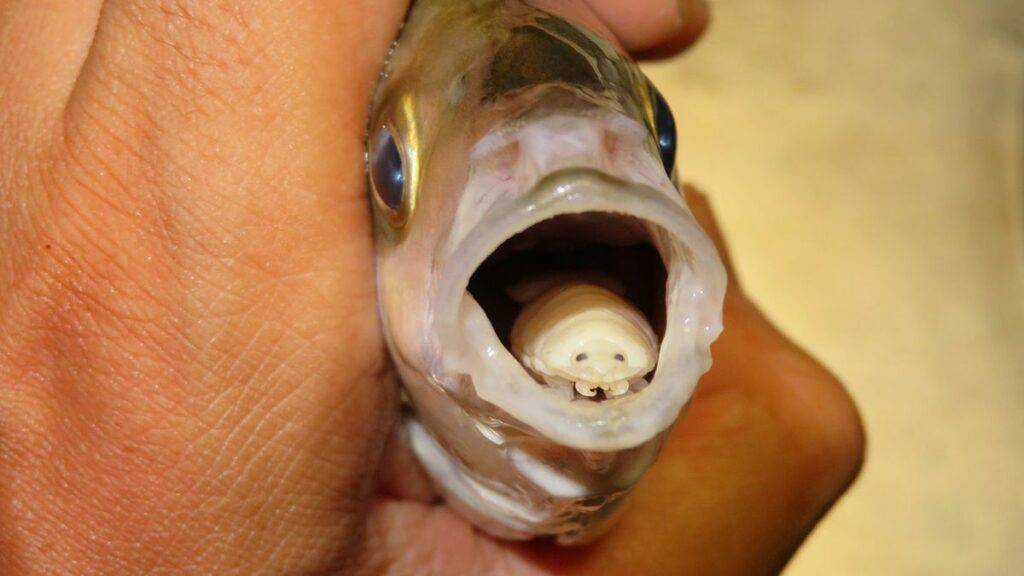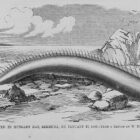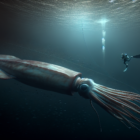What is the tongue-eating louse?

In the vast tapestry of the animal kingdom, some creatures stand out not only for their unique adaptations but also for their bizarre and seemingly otherworldly behaviors. One such enigma is the tongue-eating louse, an extraordinary parasite that has evolved to manipulate the very organ it was named after. Join me on a journey into the peculiar world of Cymothoa exigua, the tongue-eating louse, as we unravel the mysteries behind this fascinating yet unsettling phenomenon.
The Intriguing Life Cycle
The tongue-eating louse begins its existence as a minuscule larval form known as a manca. This tiny creature, no larger than a few millimeters, drifts through the water until it finds itself in close proximity to a potential host: a fish. The manca, with its sole purpose being to find a suitable host, latches onto the gills of its unwitting victim.
Once attached, the manca undergoes a remarkable metamorphosis, transforming into the parasitic isopod that will come to define the tongue-eating louse. The isopod, now equipped with specialized structures for attachment and feeding, embarks on its journey to the fish’s mouth.
Upon reaching the fish’s oral cavity, the isopod seeks out the tongue, a vital organ that will become both its sustenance and shelter. This is where the true marvel of the tongue-eating louse’s life cycle unfolds.
The isopod secures itself to the base of the fish’s tongue, employing its specialized appendages to anchor firmly in place. Here begins a feeding frenzy as the isopod taps into the host’s blood vessels, extracting the nutrients it needs for sustenance. Simultaneously, the isopod’s presence triggers a series of physiological changes in the fish’s tongue.
As the tongue-eating louse continues to feed and grow, the host’s tongue undergoes a peculiar transformation. The blood vessels supplying the tongue begin to atrophy, causing the organ to wither and eventually detach. Astonishingly, the isopod steps in as a replacement for the fish’s lost tongue, securing its position at the base of the oral cavity.
A Master of Host Manipulation
Upon reaching the fish’s mouth as a parasitic isopod, the tongue-eating louse wastes no time in asserting its dominance. It locates the base of the fish’s tongue and secures itself with specialized hook-like appendages. The feeding process begins, as the louse draws nourishment from the blood vessels of the host’s oral cavity. Simultaneously, the presence of the louse triggers a series of physiological changes in the fish that will ultimately lead to the loss of its original tongue.
As the tongue-eating louse continues to grow, the host fish experiences a gradual atrophy of its tongue. This process, known as tongue degeneration, is believed to be induced by the louse’s secretions that interfere with the blood supply to the tongue. Remarkably, the host fish seems to tolerate this loss without significant impairment of its normal functions, suggesting a level of adaptability that is still not fully understood.
The most astonishing aspect of this host manipulation unfolds when the fish’s original tongue reaches a point of complete degeneration. At this stage, the tongue-eating louse assumes the role of a living, functional replacement. The louse positions itself at the location once occupied by the fish’s tongue, securing its place with the same hooks that facilitated its initial attachment.
The strategic placement of the louse within the fish’s mouth ensures continued access to the host’s blood and mucus, sustaining the parasite throughout its lifecycle. Meanwhile, the fish, despite the loss of its original tongue, appears to adapt to the presence of the louse, maintaining relatively normal feeding behaviors.
The Bizarre Symbiotic Relationship
Despite the initial horror invoked by the idea of a parasite replacing its host’s tongue, a closer look at this peculiar alliance reveals a complex interplay that challenges our preconceived notions of parasitic interactions.
The relationship between the tongue-eating louse and its fish host is, in essence, a form of symbiosis—a cooperative interaction between two species that benefits one or both parties involved. In this case, while the fish undergoes the loss of its original tongue, the presence of the louse in its place seems to have minimal detrimental effects on the host’s overall survival and functioning.
From the perspective of the tongue-eating louse, the benefits of this symbiotic relationship are evident. The louse gains a stable and protected environment within the fish’s mouth, allowing it to feed on the host’s blood and mucus without the immediate threat of predation. Furthermore, by inducing changes in the fish’s tongue that facilitate its atrophy, the louse creates a space where it can reside comfortably, essentially becoming a living prosthetic organ for the host.
On the side of the fish host, the symbiotic relationship appears to come with trade-offs. While the loss of the original tongue might seem like a significant sacrifice, the fish often adapts surprisingly well to the presence of the louse. Some studies suggest that the fish continues to feed, albeit with altered feeding behavior, and maintains relative normalcy in its activities.










